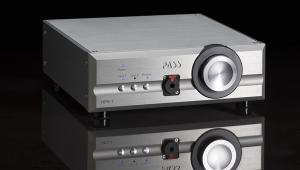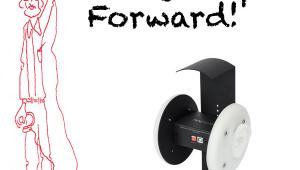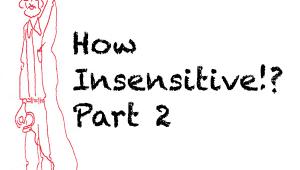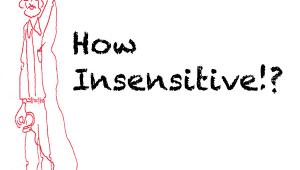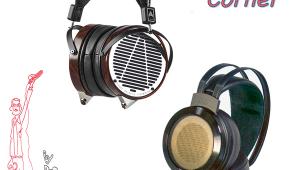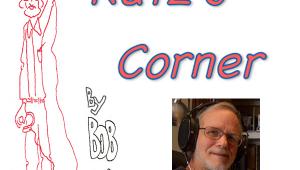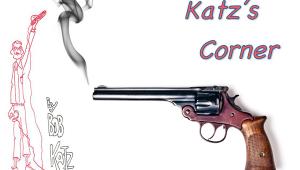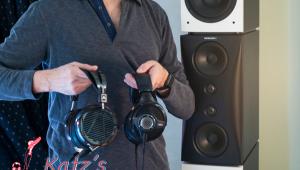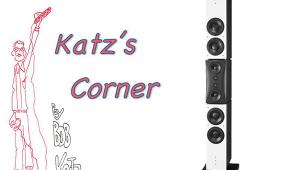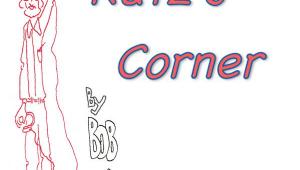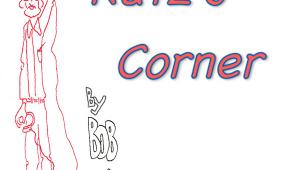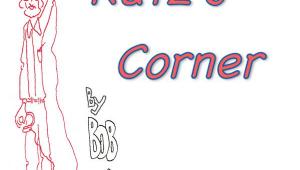| Columns Retired Columns & Blogs |
Katz's Corner Episode 25: Adventures in Distortion
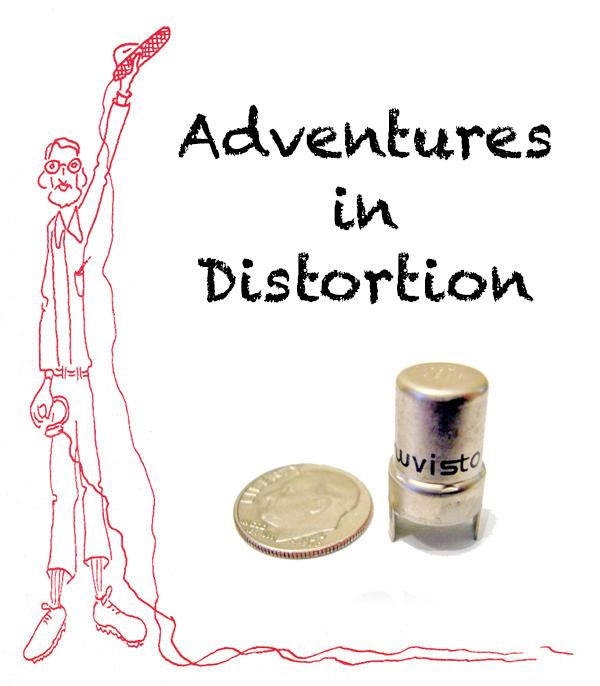
This story originally appeared at InnerFidelity.com
I. The Genesis
I've been preparing to write this article for many years! In order to make this investigation, I needed to create a laboratory-grade distortion processor, which I've just completed designing and building. Let me introduce you to Bob's Blender (Fig 1). In a moment we'll discover its features and controls.1 But first a little background: The underlying topologies in analog amplifiers, preamps, and equalizers have been evolving for decades. At first there were only tubes: triodes, tetrodes and pentodes. Then, of course came solid state, the germanium bipolar transistor (which was not particularly good-sounding), then the silicon bipolar transistor, different types of FETs, discrete opamps (which can be tube or solid state), and integrated circuit opamps which often contain hybrids of bipolar and FET elements. Some people have claimed that the choice of individual components governs the sound of the circuit (e.g. tube versus transistor, FET versus bipolar, etc.) but a skilled designer can make different components perform similarly, or the same components perform differently, depending on the circuit he chooses. So the circuit and layout are just as important as the component topology. That said, the first amplifier component ever designed, the triode tube (invented in the year 1906!), has a pretty simple distortion character. For my Blender, I chose a low voltage, low gain, ultra-miniature, metal and ceramic Nuvistor tube, the 8056 (one for each channel). The Nuvistor's footprint is smaller than a dime and it's not even as tall as the first joint of my thumb! (Fig. 2) One distinction of a Nuvistor is that it has a very high bandwidth, which can extend into the low-Gigahertz range, while many of the larger glass tubes exhibit high frequency rolloff just above the audio range. My tube blender is flat, not even a tenth of a dB drop at 89 kHz, the limit of my measurement system, so I don't know where it drops off! Of course bandwidth also depends on the circuit, so one designer can make a 12AX7 extend higher in frequency than another through use of optimized impedances.
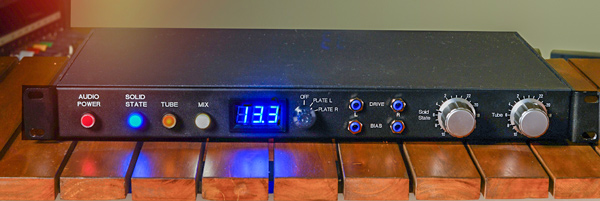
Fig. 1: Bob's Blender is a processor that adds calibrated, controllable and repeatable amounts of second harmonic distortion, as little as 0.0003% THD, as much as 1% at full peak level.
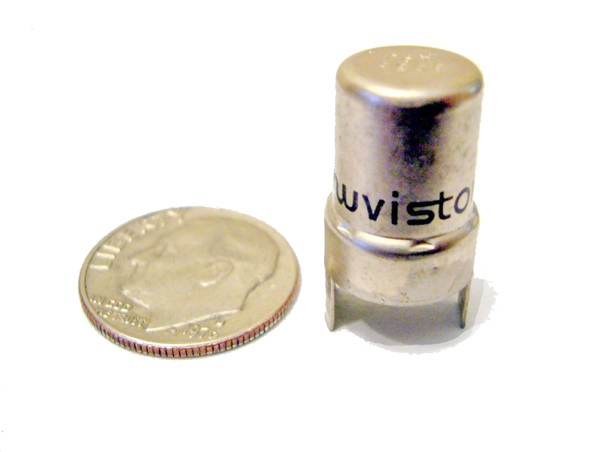
Fig. 2: The ultra-miniature Nuvistor, from Wikipedia: Photo By Jim Rees en:User:Rees11, CC BY-SA 2.5, https://commons.wikimedia.org/w/index.php?curid=10993169
Reason Number One Why Bob Is So Interested in Tubes
So why am I so interested in tubes, triodes in particular? Reason number one: The sonic nature of triode distortion and saturation. Triodes have been variously characterized as sounding "smooth", "sweet", "round", "creamy", "warm", "three-dimensional" and "present". This is largely thanks to the presence of second harmonic, the triode's dominant harmonic component.
Distortion is signal compression, so as the input level goes up, the triode softens transients by adding more second harmonic (twice the fundamental), and eventually other harmonics when levels get very high. The triode soft clips—rather than instantly turning a sine wave into a square wave. In contrast with many solid state circuits, it starts to round off the corners in a gentle way. Other devices and topologies (including tetrode and pentode tubes) are more prone to adding higher harmonics, which are known to sound harsh compared with the second harmonic that predominates in triodes. But to repeat: a good designer can create a warm-sounding solid state circuit dominant in second harmonic or with reduced upper harmonics if he wishes. Witness the warm sound quality of the Mjolnir Pure Bipolar headphone amplifier and many of the Pass products as well as the Bricasti power amp and power amplifiers from Krell, many others.
Reason Number Two Why Bob is So Interested in Tubes
Some more background: From 1950 on, many designers have been seeking ever lower harmonic distortion figures. 1950s audio gear exhibited distortion of "under 1%", sometimes as low as 0.1 or 0.2%. The earliest solid state devices exhibited similar distortion numbers, but these values quickly lowered, and by 1980 solid state audio circuits produced lower distortion than the analyzers of the day were capable of measuring. I wonder if the race for the lowest distortion figure was sponsored by the measurement equipment makers! I remember in my youth lusting over an analyzer which could measure as low as 0.01% distortion. That analyzer was soon superseded by another and yet another, each successor capable of measuring an order of magnitude lower. Some of today's amplifiers measure as low as 0.0008% (that's three zeros and an 8, 8 tenths of a thousandth of a percent). Lower is good, right? Not so fast, number crunchers!
Let's cut to the chase, it was the increasing use of negative feedback that engendered ever-lowering distortion figures. Negative feedback is a perfectly good mathematical technique that works very well. But the designer has to realize that the circuit may not sound good even if its measured THD (total harmonic distortion) is very low. If the designer pays attention solely to the THD value, he may not realize that sometimes the "good-sounding, lower harmonics" get suppressed at the expense of the "bad-sounding, higher harmonics". Research by Norman Crowhurst points out that feedback mostly reduces the level of the 2nd and 3rd harmonics, leaving the upper harmonics more or less alone, or sometimes at higher level than before feedback. It doesn't take very much level of a 5th, 7th, or 9th harmonic to make the sound "bitter", "dry", "clinical", "cold" "small" "dynamically limited" or "harsh". This is all part of the psychoacoustics of distortion and masking.
In today's investigation I aim to get a handle on how to use distortion to improve the sound quality of our playback gear. Yes, I said "improve", because we're going to redistribute the harmonic emphasis of our signal chain. Not all amplifiers with ultra-low distortion sound harsh or small: Notable among good sounding (or at least sonically neutral) low-distortion amplifiers is the Hypex Class D amplifier, invented by Bruno Putseyz. His recent model, the Hypex NCore, has near zero harmonic distortion and is audibly close to the proverbial straight wire with gain. No distortion sounds better than a little bit of bad distortion, but moderate, well-distributed distortion sounds better, too!. I believe there's a middle amount where distortion can sound deadly. Why? Because in that middle area, where the overall distortion measures somewhat low, but not close enough to zero, the presence of some higher harmonics can psychoacoustically predominate over the important lower ones. In other words, the distribution of the distortion is the key to sonic differences.
Distortion is additive. You, the consumer, cannot take it away, so when you add a preamplifier in series with your amplifier, you hear the distortion of both units. So you can increase the amount of distortion by putting one device in series with another. But why would anyone want to add more distortion to your audio reproduction? The answer is my reason number two: Masking. Just as noise can mask signal, distortion of a certain magnitude and frequency content can mask other distortion. I'd like to prove this in a controlled manner. My Blender allows us to test this hypothesis and perhaps for the first time, quantify the amount that is needed. This is not a commercial product, I have not put it into production. There is only one "Bob's Blender".
The Blender can add second harmonic distortion in a controlled and repeatable manner from an extremely low amount up to very high. It has balanced inputs and outputs, for use with professional gear such as my audio mastering chain. But it can be easily unbalanced with only slight loss of headroom using an XLR to RCA adapter, so we can use the Blender with our collection of consumer headphone amplifiers. In solid state mode, the Blender has very good input and output headroom, up to +28 dBu (19.5 volts), and very low noise (below -90 dBu) so it can interface with anything. Here are its simple controls:
- Audio Power: Turns the power to the audio section on and off.
- Solid State: This button enables or mutes the solid state section which can be mixed in any proportion with the tube section.
- Tube: Likewise, this button enables or mutes the tube section which can be mixed in any proportion with the solid state section.
- Mix: When engaged, the mixer is active. When disengaged, the Blender is hardware bypassed so we can instantly compare the blender against no blender.
- Next comes the meter, to read the plate voltage of each tube for fine adjusting the bias. Typically I bias the tube for minimum distortion.
- Next, the meter switchto meter either the left or right plate voltage.
- Next, bias adjustment and drive potentiometers. The drive can be adjusted to produce any gain up to the maximum of the tube, or to overdrive the tube or keep it closer to its linear operation.
- Next are two 1 dB/step potentiometers which I have hand-built from rotary switches and metal-film resistors. The solid state and tube sections can be mixed in any proportion in 1 dB steps from 0 dB down to -22 dB.
For example, at -6 solid state/-6 tube, the tube and solid state sections are mixed at exactly -6 dB attenuation, and the sum of the two is at unity gain. Since the solid state portion of my circuit has vanishingly low distortion, I can obtain any degree of triode distortion from the box I might wish. The adjustments are performed in the analog domain so there is no DSP which could cause aliasing artifacts. Moreover, the amount of distortion is calibrated and repeatable which allows us to listen, make changes, find our preferences and then measure the amount of distortion that resulted in the sound we prefer.
The tube drive levels have been adjusted to produce a not-excessive amount of saturation at full peak level. The stepped attenuator is located after the tube so that the distorted signal can be mixed with the "dry" signal. The power supplies are well-regulated. The tube cathode is grounded and the bias control adjusts the level of a regulated negative voltage imposed on the grid. An FET buffer isolates the tube and keeps it from being loaded down. The solid state portion uses highly-regarded THAT-brand chips for summing and balanced conversion. Here are some intriguing measurements, the source being the same Prism Callia DAC that I use to drive my headphone amplifiers. The Callia's balanced output feeds the Blender. The Callia's output level is -6 dBu (0.39 v) at -20 dBFS, which we call "nominal level", approximately the level of a mezzo forte musical passage.
In Fig. 3 we measure the Blender's solid state section (the tube section is muted). Solid state attenuation is set to 0 dB, with 1 kHz at -20 dBFS, -6 dBu. The distortion measures only 0.0003%. Any harmonic products are below -115 dBu (inaudible). The rise in noise at supersonic frequencies is due to the Prism noise-shaped converter I use for analysis.
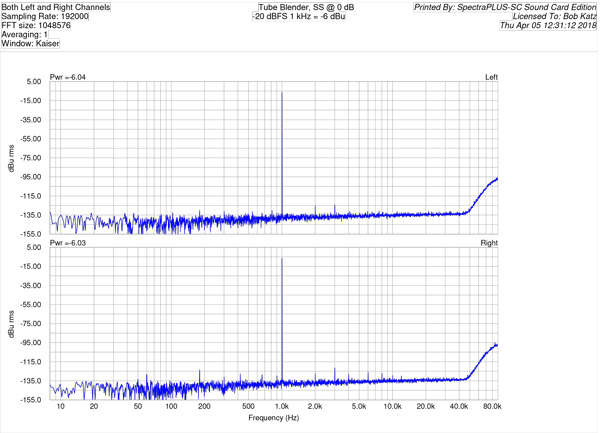
Fig 3: Blender, Solid State @ 0 dB, Tube muted. 1 khz @ -20 dBFS, -6 dBu. THD 0.0003%.
In Fig. 4, we raise the level to nearly full peak level, 1 kHz at -1 dBFS, which produces +13 dBu. Blender is set again to solid state only, attenuation 0 dB. The THD has barely risen, to only 0.0005%. Although there are some visible higher harmonics, even at full peak level, the highest harmonic is only at -95 dBu, so the solid state section is probably audibly transparent or nearly so. I don't detect any audible harshness from this solid state section, but there's nothing to prevent a designer from using even more linear components than the THAT amps I chose. And regardless, when a proportion of tube is mixed in with the solid state section, the dominant second harmonic will hopefully mask any higher harmonics.
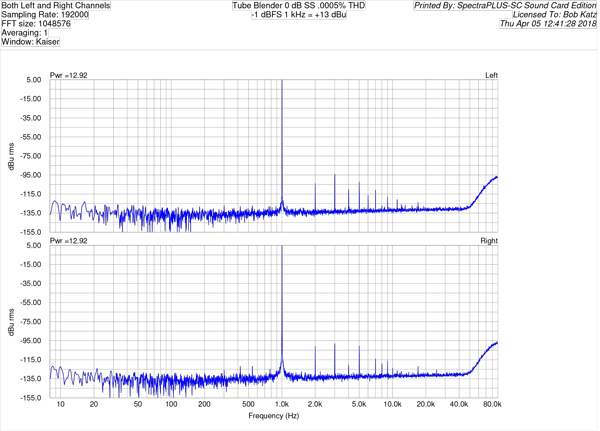
Fig. 4 Blender at nearly full peak level, 1 kHz at -1 dBFS, +13 dBu, SS @ 0 dB, tube muted.0.0005% THD
In Fig 5: We mute the solid state section, and set the tube section to 0 dB attenuation. 1 kHz @ -20 dBFS -6 dBu yields 0.1% THD. Distortion is all second harmonic, at a magnitude of -66 dBu, which I think is a sonically meaningful level. Notice that the tube noise masks all the higher order solid state distortion. The fact that the left and right distortion levels match so well is a testament to the matching of the two tubes and the precision of the bias adjustment.
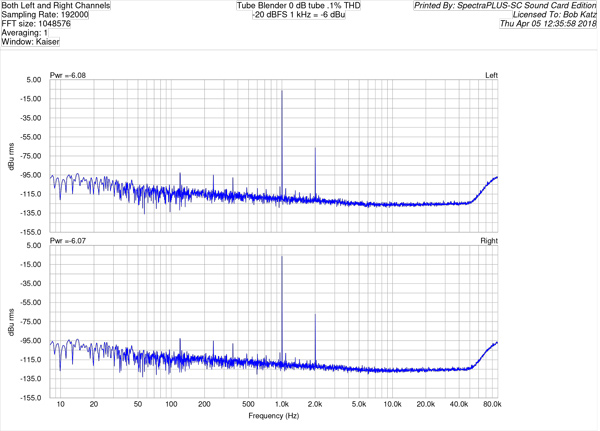
Fig 5: Blender 0 dB tube. 1 kHz @ -20 dBFS -6 dBu. 0.1% THD
In Fig 6, we mix Solid State and tube at equal level, -6 dB each. 1 kHz at -20 dBFS produces a nominal level (-6 dBu) into the Blender. This reduces the distortion by 6 dB, to 0.05%. Second harmonic is now at -72 dBu, which I believe still has an influence on the sound character. Reducing the tube attenuation even further, a mix of -2 SS and -12 tube at nominal level reduces the THD to 0.02% (not shown). At -1 dBFS (nearly full peak level, not shown), tube and solid state mixed each at -6 dB yields 0.4% THD. It doubles to 0.8% with solid state muted and tube at 0 dB (not shown). So we can repeatably produce calibrated amounts of second harmonic distortion. A listener can judge the effect of harmonic structure on sound quality and we can correlate his perception to the amount of second harmonic distortion in the circuit.

Fig 6 Blender -6 ss/-6 tube . 1 kHz at -6 dBu, 0.05% THD
II. Now For The Fun Stuff! Listening Tests.
Inquiring minds want to know the answers: Can we mask harsh distortion by adding euphonic harmonic components? Can we change the personality of an amplifier? Without introducing a sonic compromise? How much second harmonic distortion is perceptible and meaningful? I and my assistants auditioned three different solid state headphone amplifiers with the Blender in series. In each case we compared that against the sound of the Mjolnir Pure Bipolar amplifier which did not have the Blender connected. The amplifier analog volume controls were adjusted to yield matched headphone output levels at 1 kHz (loaded by 110 ohms) and the digital attenuator adjusted listening volume.
I used JRiver Media Center on PC to play high resolution audio selections. This fed Acourate Convolver (for dithered volume control), which then went to a Lynx interface which fed the Prism Callia DAC via AES/EBU. The DAC's balanced output was connected to the Mjolnir Pure Bipolar amplifier without any intervening analog circuitry. The passive Y-output of the Mjolnir was connected to the Blender input, whose output was connected to different headphone amplifiers under test. The headphones were Audeze LCD-4. I varied the mix levels in the blender of tube versus solid state to my taste, with the sum being unity gain or close to same, and also compared to hardware bypass, the "naked" sound of the amplifier under examination. I did not use any EQ for this investigation.
AMB versus Mjolnir
A couple of years ago I built an AMB M3 amplifier using the PC board which AMB sells here. (Reviewed in Katz's Corner Episode #7.) This amp has a higher than average voltage power supply (+/- 18 volts), a JFET opamp front end (OPA 637), and Mosfet outputs. A fairly strong amount of overall negative feedback is employed, yielding an output impedance of 0.2 ohms. This amplifier sounds solid and it's kicked a lot of competitors out the door, but it is no longer my listening favorite as I think it sounds a bit "clinical" and "dry" and sometimes a bit harsh. We'll be comparing the AMB fed by the Blender against the Mjolnir Pure Bipolar (reviewed in Katz's Corner Episode 18). For this listening session, my assistant, David Corson, also shared listening duties and he concurred with all of my reactions below.
West Side Story
The first music piece I picked is a bright sounding (but otherwise excellent) recording of West Side Story—a 2496 recording from Blue Coast Records of the San Francisco Symphony conducted by Michael Tilson Thomas. It's a very enthusiastic and exciting performance interpreted by a Bernstein protegé. When I listen to this recording on my loudspeakers, I normally EQ, shelve the high frequencies downward slightly, but I've discovered that the Mjolnir Pure Bipolar headphone amp sweetens transients so that program EQ is not needed when using the LCD-4s with the Mjolnir (see Katz's Corner Episode 24).
Listening to the AMB without Blender my reactions are that the sound has a clinical, bright quality, and is a bit harsh and off-putting. It does not sound real or natural. I definitely do not consider this recording as reproduced on the AMB to be a pleasant or musical listening experience. Imagine the pain in the ear listening to this recording with a pair of bright headphones. But on the Mjolnir, the LCD-4 sound is warm and quite musical, still quite open, yet softer and more natural on the peaks. Since the Mjolnir is a balanced headphone amp and the AMB unbalanced, I can switch the headphones quickly between the two amps by using a balanced headphone cord on the cans, and a special high quality adapter I made from 4-pin XLR female to TRS male.
As soon as I take the Blender out of bypass, the AMB's sound is transformed: it's now warm and sweet, yet clear; the 3 dimensional space has greatly expanded. Its personality has totally altered. In fact, the AMB's tonality now resembles the Mjolnir so much, it's uncanny. I decided that 0 dB tube level sounds pretty but some of the detail is lost, so I settled on reducing the tube level to -6 SS/-6 Tube after some experimentation. This mix setting sounds so seductive I used it for the vast majority of my listening tests. I do not hear any down side to adding the Blender at this setting. This is pure, seductive pleasure with all the detail and clarity that anyone would desire. Now, there's nothing that I prefer about this recording in the Mjolnir, it even seems that the AMB + Blender has more 3-dimensionality than the Mjolnir! My conclusion is that since distortion can only be added, not subtracted in this chain, the psychoacoustic mechanism is distortion masking. I believe that this approach to mask harsh distortion by using euphonic distortion works, very well. As I noted in the measurements section, it's also possible that the tube's broadband noise masks some of the harsh distortion.
Here's a measurement (Fig. 7) of the AMB amplifier with and without the Blender, headphone output at approximately -6 dBu into a 110 ohm load. Notice that the addition of the tube has raised the noise floor, which is still low enough to be inaudible on the LCD-4s. If I had chosen a high voltage Nuvistor instead of the 8056, the noise would be lower. So, yes, it's possible that the tube noise masks some of the distortion of the AMB amp. I could only disprove that hypothesis by changing to a quieter, higher voltage tube. But we do notice that the 2nd harmonic distortion affects the sound quality, as altering it drastically changes the sound character. In the lower trace, we can barely see some evidence of 2nd, 3rd and higher distortion components in the AMB's native spectrum, which in the upper trace are visibly and possibly audibly masked by the tube noise as well as the dominance of the tube's second harmonic. Notice that the broadband noise of the tube completely covers the 60 Hz component, which is low enough to be inaudible anyway. The 60 Hz hum and its harmonics are due to a floating ground to the analyzer, that I had to use to avoid damage to the AMB's active, driven ground.
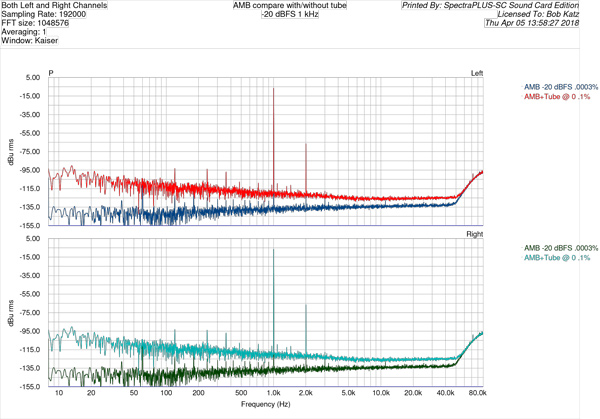
Fig. 7: AMB M3 amplifier, 1 kHz at -20 dBFS into the Callia DAC. Left channel on top, right channel bottom. The upper traces, in Red (left) or Green (right), with the Blender in series. The lower traces (blue and black) are the AMB amplifier without the Blender.
Genius Loves Company: "Here We Go Again"
This 2496 recording from HD tracks, Ray Charles' anniversary edition, is one of my favorite references, engineered by the great Al Schmidt. Ray and Nora Jones's duet. Billy Preston plays organ with a stereo Leslie supplying grit and depth.
At -6 SS/-6 Tube ratio, the ambience on the side stick is enhanced and more present when the Blender is switched in; ambience is stronger in the AMB amp now than in the Mjolnir, not unpleasant, very pretty. I've known for many years that harmonic distortion can enhance depth and ambience, but this is uncanny—it's like there's a magic reverb chamber in the tube. The ambience is enhanced in a holographic way that's totally pleasant and not at all distracting from the original mix or performance.
Tonally, there are subtle differences but on the whole the AMB with the Blender accurately mimics the Mjolnir's tone. Adding the Blender subjectively brings up the bass, although the frequency response measures ruler flat to well above 100 kHz. So the harmonics add warmth and a sense of "fatter" bottom. This wide bandwidth Nuvistor tube is very transparent and does not audibly soften the sound in any negative way. The sound on this song is 100% preferable with the Blender engaged.
The Audeze Deckard is particularly dry and uses extreme negative feedback. It's quite amazing how ADDING the tube (triode) distortion transforms this amplifier into a sweeter, deeper, warmer and more pleasant-sounding amplifier. My conclusion is that this business of denigrating amplifiers for employing "too much negative feedback" is bunko. It's not the feedback per se that's the problem, it's when the feedback changes the harmonic structure for the worse.
To my ears, the AMB amplifier is perfectly capable of becoming a world-class champ without removing its negative feedback. I conclude that as long as an amplifier is reasonably linear and powerful, it's possible to restore depth, purity of tone and life simply by adding a bit of second harmonic. Any of the issues I had with the AMB seem to vanish when we apply the triode in series, and blend the distortion in at a level that's not too high, not too low.
Marta Gomez, "La Finca" from the album "Cantos De Agua Dulce"
This is a beautiful folk album that I've just discovered, very naturally recorded by Barry Wolifson. Marta's voice is charismatic and pure. Highly recommended. On this material I didn't notice a giant increase in depth, but the sound is not at all deteriorated with the addition of the tube at a -6/-6 ratio.
Matt Davis Joins In The Listening
On another day, I invited my young assistant Matt Davis to give his reactions to the Blender.
Lindsey Webster, Back To Your Heart
Matt: This is Bob's 2496 master. The Blender at -6/-6 on the AMB amp evens out the tonality. The snare gains a more dimensional texture. The vocal pops out in a nice, natural way. The tubes rearrange the ambience in a natural sort of way. The soundstage is deeper. It almost feels like there's a little more reverb on it, but in a very natural and not objectionable sort of way. Really pleasant.
Marta Gomez, "La Finca" from the album "Cantos De Agua Dulce"
Matt: Blender at -6/-6. I hear it on the side stick. The tube makes it sound more involving. The AMB M3 amp is starting to take on a triode personality, but a very clean one. The whole sound is more spacious.
Comparing to the Mjolnir: The Mjolnir's bass is a little punchier and a little less veiled than the tubed-up AMB. But that was with -6/-6 SS/tube mix. Instead, let's try a little less tube on the AMB: -3 SS with -9 tube yields about unity gain. Now the AMB feels a lot more like the Mjolnir. The coloration is roughly equivalent, but the AMB with Blender has more depth than the Mjolnir. Hey Bob, it looks like you just made a Mjolnir killer by accident (by design!). I don't hear any down side after I changed the tube/ss mix. I've got the mix exactly where the Mjolnir is sonically and if anything I hear a depth advantage to the AMB over the Mjolnir. What a discovery!
Can we make the Audeze Deckard amp improve in the same way by adding the Blender in front? The Deckard uses extreme negative feedback and its output impedance is a few tenths of ohms. So the question is: Can we transform the sound of an amp that uses extreme negative feedback or is extreme negative feedback an irreversible detriment to sound quality?
Comparing the Mjolnir to the altered Deckard: I've got -5 SS/-7 tube. It just doesn't quite get the depth that the Mjolnir does. There's a certain dimensionality to the Mjolnir that we can't get with the Deckard, even with the tubes. The levels feel pretty matched when bypassed or between the two amps. I tried turning the tube level up further, but it starts losing clarity compared to the Mjolnir. So this becomes a matter of diminishing returns.
Bob: Tentative conclusion based on this recording: We have not examined the harmonic distribution and harmonic levels of the Deckard. But this comparison of the Deckard with the AMB implies that sometimes negative feedback can be completely mollified by the addition of a tube stage or harmonic distortion, and sometimes it cannot, but adding the tube stage can certainly improve the situation.
West Side Story
Jet Song [see Bob's notes above]. Mjolnir versus the Deckard modified with tube or AMB modified with tube.
Matt: Beginning with -6/-6 ratio. There do not seem to be any down sides to the modified AMB. Neither the AMB with tubes nor the Mjolnir are more advantageous with this recording. I would call the two presentations comparable. But what about the Deckard? Deckard, beginning at -6/-6 versus the Mjolnir. The high hats and brass have a harsh quality in the source recording. The Mjolnir does a nice job of smoothing them and with the Blender the Deckard performs similarly at -6/-6, I think the character of the high hats is still slightly preferable on the Mjolnir, but it's a tight race tonally. Depth is also very close, so it seems that extreme negative feedback is not necessarily a detriment at least for this recording.
Bob: I conclude sometimes the Deckard can be improved without loss, and sometimes it cannot. I'm sure this is related to the harmonic content and complexity of this recording; the more complex, harsher and brighter the recording, the harder it is to sweeten it up.
FB Pocket Orchestra "I Lost My Girl From Memphis" 2496 master by Bob
Matt: This is a rather bright, brashy recording that could benefit from some sweetening. Another good test of the precept at hand here with the Deckard. I think the tube-modified Deckard and the Mjolnir function pretty well equivalently at the task of softening the objectionable transients on this recording. The depth is also roughly equivalent. However, the mix separation between instruments, which is kind of an asset to this recording, is better in the Mjolnir, the instruments have their own place where they sit more than in the Deckard. It could be level matching or the tube mix, which is at -6/-6. It's very subtle and could just be a level matching issue. This still speaks a lot to the legitimacy of the tube box, because without the tube box in series with the Deckard, there is no comparison, the two amps are not close.
JDS O2 amp
Matt: This is the amp that Bob has given a terrible review. Let's try it with the Blender in comparison with the far more expensive Mjolnir. Can we transform a $129 portable headphone amplifier to the quality of a $2500 boutique amp by the addition of tube distortion?
Donald Fagen, Morph The Cat, 2496 from HD tracks
Matt: Level matching done by ear. The tube really opens up the little O2 amp, it makes a valiant effort. Without the tubes, it's a very flat, undimensional amp. The tubes are transformative, they take a C- amp and make it at least a B+. There's definitely some personality going on in the Mjolnir that I prefer over the modified O2, but the Blender gets it a lot closer than I would have thought at -6/-6 blend.
Now let's try more tubes, turn it up to 0 dB tube. Even with the tubes on all the way, this Nuvistor is a really transparent tube. But this level does soften the details while it mollifies the O2 amp. Do I prefer all tube to no tube? This is a tough call, 0 dB tube veils the mix but I do like that it adds depth to the soundstage. If we were starting with a superior amplifier, we'd need less tube. For example, the AMB needed far less tube to get it in the ball park.
Bob: There could be some other factor going on with the O2 amp, because if the problem with the O2 is harmonic distribution, then adding the Blender in the same proportions as were used for the other amps should be the cure for the problem.
III. Conclusions
Is It Accurate? - Is the Blender accurate? Adding a certain amount of second harmonic can improve the purity of tone and depth of amplifiers without losing any detail, impact or transient response. But as we saw with the West Side Story recording, the Blender is "forgiving" and makes this recording more palatable. In that respect it is not an accurate product because it can mask the sonic differences between recordings. That disqualifies it for use in a mastering studio monitor, where I have to accurately know what my recordings sound like. But my Blender does get studio use as a mastering processor and I do not hesitate to recommend it for audiophile listening. It makes a great audiophile headphone or loudspeaker processor.
A Look Toward The Future
I believe that second harmonic distortion is sonic gold for audiophiles: It's very seductive, especially if you want a warm sound quality, three-dimensionality, and beautiful reproduction of ambience and depth. Based on the listening tests, there does not seem to be a sonic negative side if the proportions are done right. Yes, too much second harmonic and detail will be lost or the sound can become flubby, like some inferior tube preamp designs. That's why this listening test was so useful, as we can discover how much harmonic distortion is "just enough".
Also, the process must not cause any artifacts. Since tubes are no longer made, a solid state or a digital solution might work. I question the quality of any DSP solution that I've heard so far. I have plugins which emulate analog distortion which can be used in mixing and mastering. They've reached the point where I can subtly use them to color sound, or produce a special effect, but I have not yet heard a digital emulation that I would call "audiophile-quality", transparent and artifact-free like this Blender. I have friends who are DSP designers who say transparent emulation can be done—so bring it on down, I want to hear it! Remember: A little bit of harsh distortion, especially inharmonic distortion (aliasing), is quite audible. A DSP algorithm without artifacts will require extremely high upsampling and impeccable coding.
I can't predict if this circuit will become popular with audiophiles, but it certainly is going to be popular with me! I think that some designers will be taken aback. The last thing they may want is an amplifier whose personality can be altered by the turn of a dial. The idea seems like a gimmick, no matter how good it sounds to the ear. The process takes away the marketing exclusivity of an amplifier brand and its unique sound, since I've demonstrated that a good, linear amplifier can be literally transformed to a sonic gem. Some relatively inexpensive circuits can take on the personality of high end boxes made from unobtanium. But not all cheap amplifiers can be sufficiently improved, as we learned from this listening experiment.
So I hope some designers will embrace this approach: A smart designer might produce an outboard box with variable second harmonic level like my Blender. Another designer might incorporate this type of circuit inside of an amplifier. Personally I would embrace an amplifier whose personality can be controlled for pleasure listening. Consumers might feel uncomfortable with so much variability under their control, or reject a control knob labeled "distortion". But if you already like to use program EQ, then a knob that affects tonality as well as depth would be a logical extension of your palette. Keep in mind that for over 90% of the program material we auditioned, we agreed on a single blend setting so a box doesn't have to be complicated, the control could be left off the front panel. So designers might incorporate this circuit, even secretly, inside of their amplifiers.
Recommended Settings
The added distortion should subjectively improve sound quality without degrading clarity, depth, or definition. If not, then the device must be adding too much distortion. Based on these listening tests, I recommend a maximum level of second harmonic no higher than 60 dB below the fundamental at nominal level (mezzo forte), typically -20 dBFS. The sound of -60 dB second harmonic is pleasant to the ear and enjoyable to many listeners, but perceived as a bit thick sounding with some loss of detail. Probably -66 dB second harmonic is the ideal setting, as in our listening it produces an attractive, warm, three dimensional quality with no apparent loss of detail or other side effects on any amplifier we tried. With some musical sources and some listeners, we may have to further lower second harmonic. I also suggest that the processor and amplifier be otherwise very linear, with good power supply regulation and extended bandwidth well above 20 kHz. It helps to start with amplifiers that do not have excessive upper harmonics before applying the Blender. Masking works, but it's not a miracle worker.
We did not investigate third harmonic distortion, so we do not know whether third would be a useful addition. But I suspect third harmonic will not be helpful. Analog tape distortion is predominantly third harmonic and it can sound very nice, but my experience is that it's more of a color machine than a cure for bad sound. Third is less invisible than second harmonic, it softens the high frequency peaks and it can strongly compress dynamics. So I recommend that added harmonic distortion should consist solely of the second harmonic; the rest of the harmonic residuals should be at negligible level, very close to the noise floor if at all measurable.
We have to perform further listening tests. We did not investigate IM distortion and since real music consists of multiple mixed tones, the effect of IM will vary with the type of music, depending on how dense it is. Witness that the simple folk music arrangement was less affected by the Blender than the more complex music. But if we stick to just adding second harmonic, it will reduce the complexity and any harmful IM. I enthusiastically invite any reviewer to come down to Florida to check out Bob's Blender. This article changes the way we should think about amplifiers: We are living in very interesting times!
1 I want to thank my two mentors, John Chester and Gordon Rankin, who helped me with aspects of the tube design.
- Log in or register to post comments
